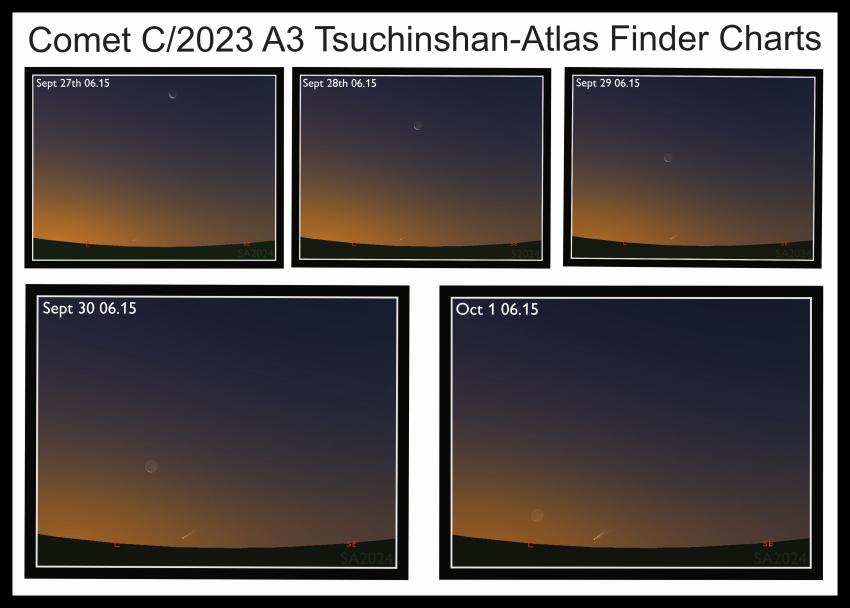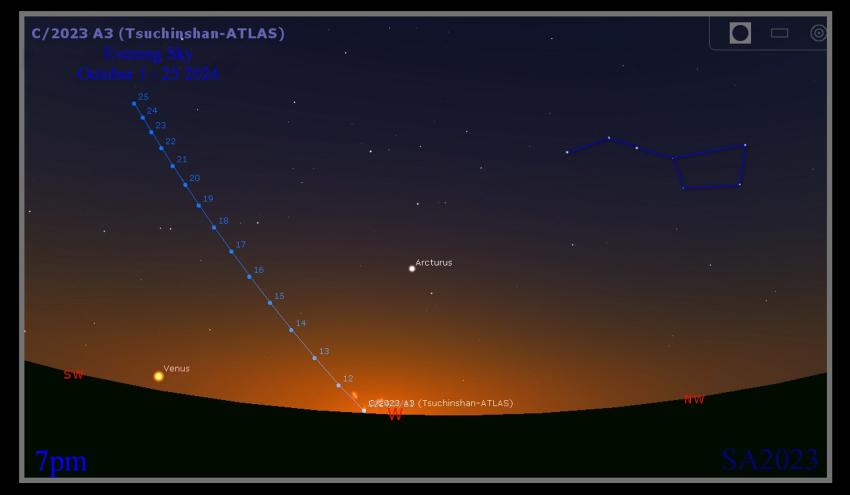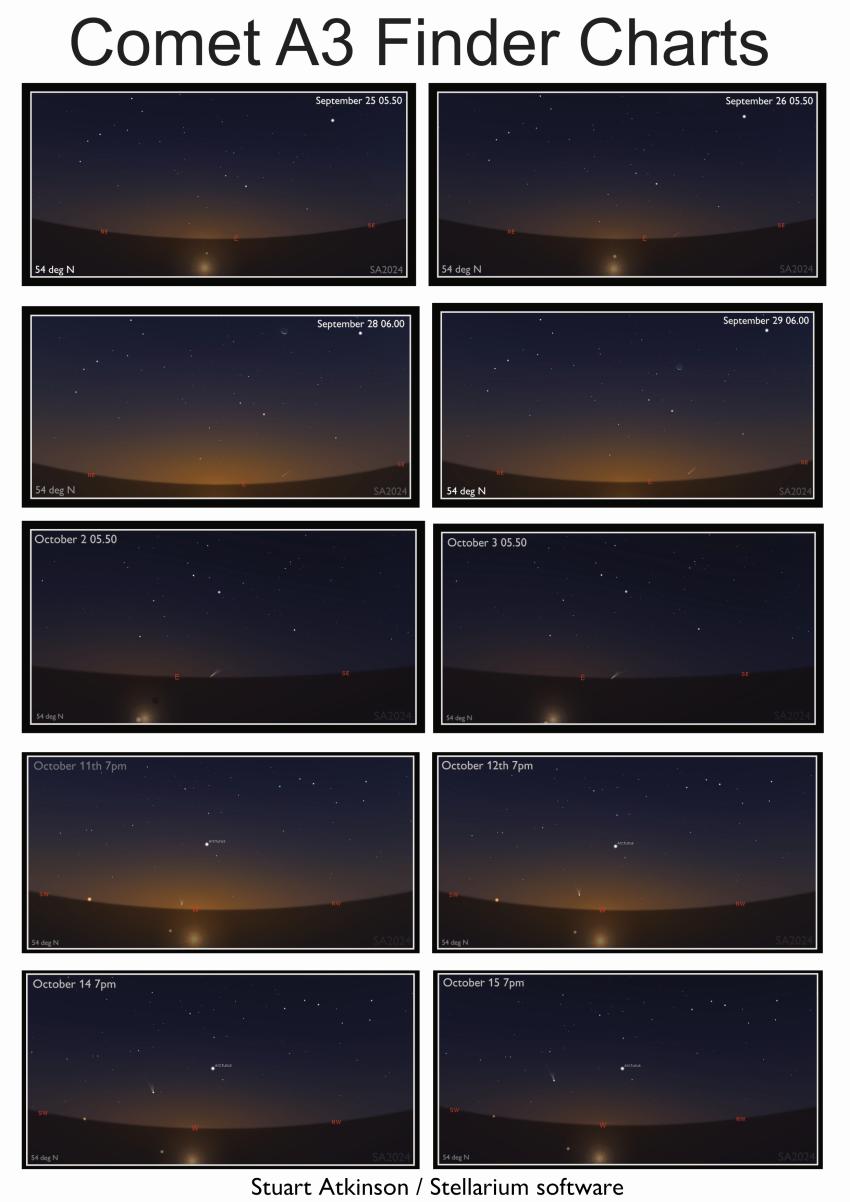Stargazers will have the chance to spot what could be the most impressive comet of the year over the coming weeks.
Comet A3 (Tsuchinshan-ATLAS) has generated so much excitement about how bright and visible it might be that it has even been billed as the “comet of the century” in some quarters.
Although that is “not very likely”, according to the Royal Astronomical Society’s Dr Robert Massey, there is still a chance it could be visible with the naked eye, or at the very least with binoculars.
“We’re all really excited about the prospect of the Comet A3 (Tsuchinshan-ATLAS) and how it might just be a nice bright object in the night sky,” he said in a video explainer about the comet.
“I would think that you’re going to need a pair of binoculars to pick it out, or a telescope if you have the right kind of telescope with a wide field and you know exactly where to look.
“But who knows, it might be visible to the naked eye as well. We’ll just have to wait and see.”
The comet, which was discovered in January 2023 and named after the two observatories that independently spotted it, visits the inner solar system roughly every 80,000 years. This means it would last have been visible from Earth when the Neanderthals were walking the planet.
It comes from a place called the Oort Cloud – a giant spherical shell surrounding our solar system which is home to billions of objects, including comets.
People in the southern hemisphere have already had a glimpse of Comet A3, but from now it can also be seen in the northern hemisphere.
There will actually be two windows to spot it. Firstly, between the 27 September and 2 October, when it will be visible east just before sunrise, and then again between the 12 and 30 October. This is when there will be a better chance to see it, if you look to the west just after sunset.
But just how bright might it be? Despite the excitement, Dr Massey added a word of caution.
“People are asking whether this will be some kind of ‘comet of the century’ – if you read some news outlets they imply that,” he said.
“I don’t personally think that’s very likely. I think it’ll be a nice comet - and it looks as though it’s holding up for that - but it’s unlikely to be as easy to see as NEOWISE was in 2020 or Hale-Bopp in the late 1990s, which many of us still remember as being a really dazzling object.”
That doesn’t mean you can’t get a good picture of it, however.
“It helps if you’ve got a good DSLR camera and can take a series of exposures – a lot of astrophotographers do so successfully,” Dr Massey said.
“Also, if you have a good mobile phone camera and a small telescope, you can hold the mobile phone against the eyepiece of the telescope and try to take a picture that way.
“That worked well with comets like NEOWISE and it might work well with this one, depending on how bright it is.
“And if it’s genuinely easy to spot, you might, might be able to pick up your mobile phone, rest on something, and just point and shoot.”
Want to learn more about Comet A3? Watch our explainer video and view the finder charts above.
And if you’re lucky enough to get a picture of the comet, why not share it with us via our social media accounts. You can find us on X, Facebook, Instagram, LinkedIn and YouTube.
Media contacts
Sam Tonkin
Royal Astronomical Society
Mob: +44 (0)7802 877700
Robert Massey
Royal Astronomical Society
Mob: +44 (0)7802 877699
Notes for editors
About the Royal Astronomical Society
The Royal Astronomical Society (RAS), founded in 1820, encourages and promotes the study of astronomy, solar-system science, geophysics and closely related branches of science. The RAS organises scientific meetings, publishes international research and review journals, recognises outstanding achievements by the award of medals and prizes, maintains an extensive library, supports education through grants and outreach activities and represents UK astronomy nationally and internationally. Its more than 4,000 members (Fellows), a third based overseas, include scientific researchers in universities, observatories and laboratories as well as historians of astronomy and others.
The RAS accepts papers for its journals based on the principle of peer review, in which fellow experts on the editorial boards accept the paper as worth considering. The Society issues press releases based on a similar principle, but the organisations and scientists concerned have overall responsibility for their content.






